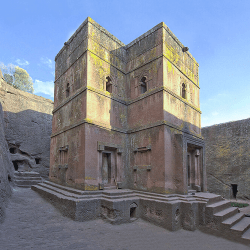UNESCO World Heritage Sites in Mexico are:
- Historic Centre of Mexico City and Xochimilco
- Historic Centre of Oaxaca and Archaeological Site of Monte Albán
- Historic Centre of Puebla
- Pre-Hispanic City and National Park of Palenque
- Pre-Hispanic City of Teotihuacan
- Sian Ka’an
- Historic Town of Guanajuato and Adjacent Mines
- Pre-Hispanic City of Chichen-Itza
- Historic Centre of Morelia
- El Tajin, Pre-Hispanic City
- Historic Centre of Zacatecas
- Rock Paintings of the Sierra de San Francisco
- Whale Sanctuary of El Vizcaino
- Earliest 16th-Century Monasteries on the Slopes of Popocatepetl
- Historic Monuments Zone of Querétaro
- Pre-Hispanic Town of Uxmal
- Hospicio Cabañas, Guadalajara
- Archaeological Zone of Paquimé, Casas Grandes
- Historic Monuments Zone of Tlacotalpan
- Archaeological Monuments Zone of Xochicalco
- Historic Fortified Town of Campeche
- Ancient Maya City and Protected Tropical Forests of Calakmul, Campeche
- Franciscan Missions in the Sierra Gorda of Querétaro
- Luis Barragán House and Studio
- Islands and Protected Areas of the Gulf of California
- Agave Landscape and Ancient Industrial Facilities of Tequila
- Central University City Campus of the Universidad Nacional Autónoma de México (UNAM)
- Monarch Butterfly Biosphere Reserve
- Protective town of San Miguel and the Sanctuary of Jesús Nazareno de Atotonilco
- Camino Real de Tierra Adentro
- Prehistoric Caves of Yagul and Mitla in the Central Valley of Oaxaca
- El Pinacate and Gran Desierto de Altar Biosphere Reserve
- Aqueduct of Padre Tembleque Hydraulic System
- Archipiélago de Revillagigedo
- Tehuacán-Cuicatlán Valley: originary habitat of Mesoamerica
> View other UNESCO World Heritage Sites
More on World Heritage Sites
UNESCO (United Nations Educational, Scientific and Cultural Organization) World Heritage Sites comprise 1,199 properties.

World heritage property is a legacy from the past, that people live with today, and pass on to future generations.

The cultural and natural heritage are both irreplaceable sources of knowledge and inspiration.





UNESCO seeks to encourage the identification, protection and preservation of cultural and natural heritage around the world that are considered to be of outstanding value to humanity. This is embodied in an international treaty known as the Convention concerning the Protection of the World Cultural and Natural Heritage, adopted by UNESCO in 1972.
A World Heritage Site is an area or landmark designated by UNESCO for having cultural, historical, scientific or other forms of significance. The sites have legal protection by an international convention.
A World Heritage Site is nominated by their host country and determined by the international committee to be a unique landmark which is geographically and historically identifiable and having a special cultural or physical significance. World Heritage Sites are usually ones with ancient features, historical structures, buildings, cities, deserts, forests, islands, lakes, monuments or mountains.
The site may signify a remarkable accomplishment of people and serve as evidence of intellectual history or a place of unparralled natural beauty.
The sites are intended for practical conservation for posterity, which otherwise would be subject to risk from human or animal trespassing, unmonitored, uncontrolled or unrestricted access, or threat from local administrative negligence. Sites are demarcated by UNESCO as protected zones.
The programme catalogues, names, and conserves sites of outstanding cultural or natural importance.
The work began with the Convention Concerning the Protection of the World’s Cultural and Natural Heritage. The convention was adopted by the General Conference of UNESCO on 16 November 1972. Since then, 195 states have ratified the convention, making it one of the most widely recognised international agreements and a popular cultural programme.






